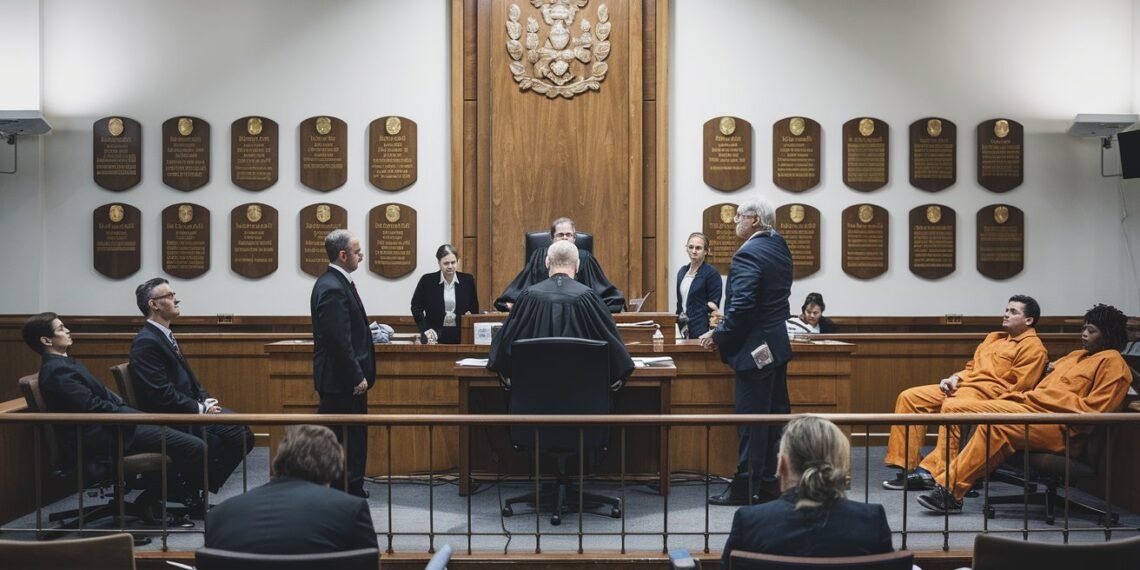Naveena .K ,IVth Year Chettinad School of Law,CARE,Chennai
INTRODUCTION:
Assessment of Criminal Liability in Terms Beyond Harm and Intent, the provision of Section 87 IPC is very important. It addresses cases that involve a person who engages in an act which could result into harm but the harm is not grave, and if both sides participate with mutual consent then there arises no criminal intent. Section 87 of the IPC is a key provision in relation to general criminal liability, providing — “Nothing is an offence which is done by a person who, from as pardonable ignorance or infirmity incapable to knowing nature of his conduct even if he knows and really misbelieves that act for surveillance right committed cannot be otherwise than wrongfulness. The exception of insanity known as a defense to standing criminal allegations on someone too mentally ill to know or appreciate what they’re doing. The interpretation of Section 87 IPC, however has remained a contentious issue and the area requiring judicial scrutiny and consideration frequently is in incidents related to non-serious acts. This article discusses this balance between harm and intent in those cases as well it considers how the Courts have applied Section 87 IPC to determine criminality.
Keywords: Harm and Intent, section 87 of IPC, Conduct, Criminal Allegations.
ACT NOT INTENDED AND NOT KNOWN TO BE LIKELY TO CAUSE DEATH OR GRIEVOUS HURT, DONE BY CONSENT:
Nothing which is not intended to cause death, or grievous hurt, and which is not known by the doer to be likely to cause death or grievous hurt, is an offence by reason of any harm which it may cause, or be intended by the doer to cause, to any person, above eighteen years of age, who has given consent, whether express or implied, to suffer that harm; or by reason of any harm which it may be known by the doer to be likely to cause to any such person who has consented to take the risk of that harm.1
1
KEY ELEMENTS OF SECTION 87 IPC:
Innocent Act:
A person is not guilty of an offense if he or she acts under a mistake and the alleged factual situation, had it existed as they believed a genuine but mistaken belief, would justify their behavior.
Intention and Act:
The seemingly bizarre act was not the absolute defense but it is relevant to his state of mind, circumstances and distinction between wishful thinking with what he had actually done.
Mistake of Fact:
The defence facilitates when the offender has a good faith belief that goes completely against innocent behaviour. The error cannot be due to carelessness or recklessness.
THE CONCEPT OF HARM AND INTENT:
Harm, in the context of criminal liability, refers to the negative impact caused by an act. Intent, on the other hand, describes the mental state of the perpetrator, specifically their desire or knowledge that their actions would cause harm.
HARM:
The extent of the harm caused is a key factor in assessing criminal liability. The severity of the harm, both physical and emotional, plays a significant role in determining the appropriate punishment.
INTENT:
The level of intent is also crucial in criminal law. It helps distinguish between deliberate acts and accidental or negligent conduct. The presence or absence of intent can drastically alter the legal consequences of an action.
PRINCIPLE OF MENS REA:
A bedrock of criminal law is the principle of mens rea, or “guilty mind.” For instance, the definition in most jurisdictions is that it requires a person to know what they are doing and intend to commit the crime. Essentially Section 87 of IPC will be able to detect that due to mental madness some or may all Individuals can’t form required mens rea.
BALANCING HARM AND INTENT IN CRIMINAL LIABILITY: Assessment of Harm:
The factor of venality very strongly influences the evaluation of criminal liability. Under any statute, the more serious and lasting threat to personal freedom from a given act, the greater is likely to be its classification as criminal.
Evaluation of Intent:
But the motive behind it and who is doing that crime matters too. Or that the more intentional the actor was in committing it, then the act is likely a crime rather than an accident or negligence.
Balancing Act:
The other side of the coin is that the law seeks to gauge how much harm such actions have created but also what was going on in their head, his / her mind so as not be part and parcel of street justice. What is being balanced here are two goals: punishing the guilty as befits their crime, and doing so in a fair way.
CHALLENGES IN APPLYING SECTION 87 IPC:
Subjective Intent:
Proving the true intent of a defendant can be especially difficult as it usually involves their state of mind which, unlike with acts done in furtherance of a conspiracy is virtually impossible to prove.
Complexity of harm:
The damage of a non-serious act is difficult to assess, particularly intangible or emotional harm. Balancing Act:
Determining where to draw a line between the quantum of harm and the intention matters, as we must be seeking justice in every case.
FACTORS CONSIDERED IN ASSESSING HARM AND INTENT: Nature of the act:
- Type of crime committed
- severity and
- potential for harm.
Circumstances of the act:
- The specific context in which the crime took place, including the time, place, and • any extenuating circumstances.
Defendant’s Background:
- The defendant’s prior criminal record
- mental state and
- personal history can influence the assessment of harm and intent.
JUDICIAL INTERPRETATION:
Rattan Singh v. State of Punjab2:
- The complainant sustained an injury due to the accused, but during a wrestling match. It was an injury from a game initiated by mutual agreement between parties. • The court held that the case was covered under Section 87 IPC as there is no bruising and damage to life.
K.S Puttaswamy v State of Karnataka3:
- The accused caused hurt to complainant in course of a sports activity with the consent.
- The Court reviewed the relevance of Section 87 and awarded reverence to its applicability but stated that habit consent and context was crucial here. The injuries related to the underlying negligence must have been within what was consented or ordinarily contemplated.
Joginder Singh Vs State of Punjab4:
- The accused, during friendly game causing injuries more than would normally occur in the playing of a normal game.
- The court held that while section 87 is a shield for consensually receiving injuries, the extend of harm and nature of consent need proper scrutiny keeping with facts of the case to avail said protection.
State of Maharashtra vs. Madhav Shankar5:
- The accused was charged with infliction of hurt during consensual play fighting • The court upheld the test enshrined in Section 87 IPC that if there is no likelihood of death or grievous hurt and the act was done with the consent of affected person, then apply section 87 IPC. In this context, the court placed greater reliance on the nature of injury as against consent only.
CONCLUSION & COMMENTS:
As for Section 87 IPC, it needs a subtle understanding of the connection between harm and intent. The courts have held that for this section to apply, the harm must be non-serious, and the person who is injured must have given informed consent. The judicial stance on this issue is to balance very carefully what lay behind such acts and what was actually caused.
In conclusion, Section 87 IPC is an important provision in the Indian legal system, which provides a defense of consent for non -serious harm. The courts’ interpretation of the Section represents a judicious weighing of harm and intent, designed to ensure that guilt does not attach where (though the harm is not grave) consent has been given. With the development of Case Law, we’ll see how courts continue to cope with this double-edged legal sword.
- A) REFERENCES
- Books / Commentaries / Journals Referred
- IPC Bare Act 1860
- Law of Crimes -I -Dr S.R.Myneni
- Online Articles / Sources Referred
- https://lawcolumn.in/consent-in-ipc-general-exceptions
- https://www.legalserviceindia.com/legal/legal/article-14373-important cases-of-general-exceptions-in-ipc.html
- Cases Referred
- Rattan Singh v. State of Punjab
- K.S Puttaswamy v. State of Karnataka
- Joginder Singh v. State of Punjab
- State of Maharashtra vs. Madhav Shankar
- Statutes Referred
- India Penal Code , 1860



